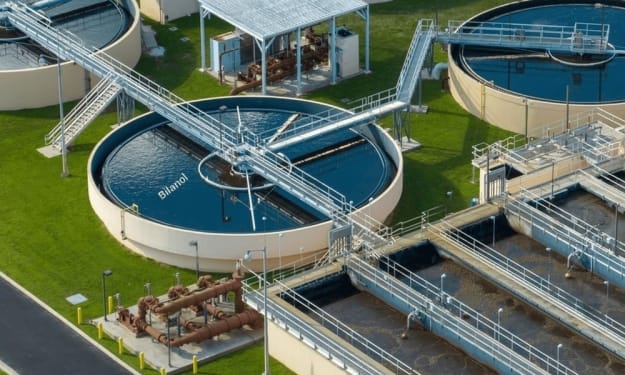The Future of Water Management: Water Level Automation Technologies
Introduction

Water is a finite and precious resource that is essential for life, agriculture, industry, and countless other purposes. As the global population continues to grow, the demand for water is on the rise, making efficient water management a critical concern. In this digital age, technology is playing a pivotal role in addressing these challenges, and one of the most promising developments is water level automation technologies. In this blog, we'll explore the future of water management through the lens of automation, highlighting the benefits and advancements in this field.
Challenges in Water Management
Before diving into the world of water level automation technologies, it's crucial to understand the challenges that the water management industry faces. These include:
Resource Scarcity: Many regions are grappling with water scarcity, and climate change further exacerbates this issue. Efficient water management is essential to ensure a reliable supply of clean water.
Infrastructure Aging: Aging water infrastructure in many parts of the world leads to leaks, inefficient distribution, and a loss of valuable resources.
Sustainability: Water management must be sustainable, considering ecological and environmental impacts.
Cost Control: Water management can be expensive. Reducing waste and optimizing water usage can help control costs.
Data and Monitoring: Real-time data and monitoring are essential for effective decision-making in water management.
Water Level Automation Technologies
Water level automation technologies offer innovative solutions to address these challenges. Here are some key aspects of these technologies:
IoT Sensors: Internet of Things (IoT) sensors are used to monitor water levels in reservoirs, tanks, and rivers. These sensors provide real-time data, enabling better decision-making.
Automation Control Systems: Advanced automation control systems can manage pumps, valves, and gates to regulate water flow. These systems respond to sensor data and can be programmed for various scenarios.
Remote Monitoring: With the power of the internet, water level data can be monitored remotely, allowing for faster response times in case of anomalies.
Predictive Analytics: Machine learning and predictive analytics can forecast water demand, identify potential issues, and optimize water distribution.
Energy Efficiency: Automation technologies can help reduce energy consumption in water management processes by ensuring that pumps and equipment operate efficiently.
Benefits of Water Level Automation
The future of water management, centered around water level automation, offers numerous benefits:
Efficiency: Automation reduces human error and ensures that water distribution is optimized, reducing waste and energy consumption.
Cost Savings: By reducing waste and improving efficiency, automation can lead to significant cost savings in water management.
Sustainability: Automation systems can be programmed to prioritize environmental considerations, such as maintaining water levels in rivers and protecting ecosystems.
Data-Driven Decision Making: Real-time data and analytics enable more informed and timely decisions.
Resilience: Automation systems are designed to respond quickly to changing conditions, enhancing the resilience of water management infrastructure.
The Future Landscape
The future of water management is bright with the integration of water level automation technologies. As these technologies continue to advance, we can expect:
Greater Adoption: More regions and municipalities will adopt these technologies as they realize the benefits in terms of cost savings, resource conservation, and improved service.
Smart Cities: The concept of smart cities will expand to include smart water management, with automation technologies as a cornerstone.
Environmental Focus: Water management will increasingly focus on environmental sustainability, ensuring that ecosystems are protected alongside human water needs.
Data Sharing: Data sharing between agencies and even between countries will improve water management practices on a global scale.
Innovation: Continuous innovation will lead to more sophisticated automation systems, further enhancing water management capabilities.
Conclusion
Water level automation technologies are at the forefront of the future of water management. They provide solutions to many of the challenges faced by the industry and offer a path towards greater efficiency, cost savings, and sustainability. As technology continues to advance, we can look forward to a world where water resources are managed more effectively and responsibly, ensuring a sustainable future for generations to come.
About the Creator
waterdesigntechnologies
Get the Best Water treatment technologies in Gujarat. Our innovative clean water solutions in Surat use advanced technologies to filter, purify, and recycle wastewater.






Comments
There are no comments for this story
Be the first to respond and start the conversation.